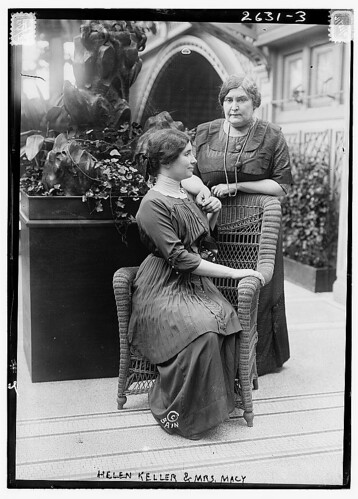Regular readers at this blog will be more accustomed to seeing the Disability Blog Carnival appear here, or announcements about it--but this month, DS,TU is hosting the History Carnival. So grab your bowl of leftover Halloween candy, your sugar skulls, your Diwali sweets, a warm slice of pumpkin bread, or whatever other season-appropriate snacks you want to munch during the costume parade. (Go ahead, I'm eating a lot of candy while I assemble this, so it might read better if you join me.)[Image description: a vintage photo of a large group of people posed in costumes, taken in the 1910s in Pennsylvania. From my own family collection; two of my great-grandparents are in the front row.]
IN DISGUISE
Be careful about answering your doorbell on Halloween in the history blogosphere. No telling who might appear on your doorstep, with what costumes, disguises, masks, and hidden identities...
"the perils of prehistoric map hunting"Heard about the cave wall in Turkey that was maybe
the world's oldest known map? John Krygier at DIY Cartography reveals this famous image's more likely identity.
Want to be the King of Araucania-Patagonia for Halloween?The short-lived South American kingdom still has a royal family in exile, and a
flag, and now a website; if you're wondering about its borders, Strange Maps has
the chart you need.
"regulation tight breeches and thigh-high leather boots"Bellanta at The Vapour Trail takes us through the dressing rooms of the East End, to find actresses in Victorian London who played
gun-toting highwaymen, wrought vengeance, engaged in fistcuffs, and otherwise kicked theatrical butt.
"The Irish Frankenstein"...
..."The Irish Ogre," and other political cartoons depicting Irish immigrants in America are laid out in Gwen's "
Negative Stereotypes of the Irish," at Sociological Images.
"urban legends and hoary zombie errors"What happens when a 'critical figure in English letters' just makes stuff up citations and all? And what if it involves
roast pork and faux-Chinese faux-antiquities? Jonathan Dresner tells the tale at Frog in a Well: China.
"the louse and death are friends and comrades"Daniel Goldberg at Medical Humanities offers a fine collection of images depicting the dangers of
infection in various historical and geographic contexts. Be sure to scroll to the very end for the "I've got V.D." sandwich-board--definitely the worst costume idea I've seen this year.
"such foul slander and abuse"Go read an extract from the speech
Theodore Roosevelt gave after he got shot--about the inevitable effect of nasty campaign rhetoric has on audiences who are quite willing and able to be brutal and violent; at Ahistoricality.
"eat jellied eels and think distant thoughts"Gregory McNamee asks, will Congress finally
pardon boxer Jack Johnson? His 1915 conviction under the Mann Act was based on racial bias, according to the House resolution. As he says, "stay tuned."
"a jeweled metallic bra, long veils, and a jewelled headress of Javanese design"Margaretha Geertruida Zelle is best known for her seductive
Mata Hari costume, and for being executed as a spy in 1917 -- check out the details of her life at Elizabeth Kerri Mahon's Scandalous Women (in two parts!). Records released in 2000 showed her to be innocent of the charges against her. And apparently some of the legal files on Zelle won't be released until
2017, so stay tuned.
 [Image description: Black-and-white portrait of Mata Hari in costume, seated on a pew-like bench, with flowers strewn at her feet]
[Image description: Black-and-white portrait of Mata Hari in costume, seated on a pew-like bench, with flowers strewn at her feet]
Churchill said what?Tim Lacy rounds up an impressive array of variations on
a famous Churchill quote--which of them, if any, is the accurate version?
Ooh, I know, you're dressed as John T. Scopes!The Smithsonian Institution Archives recently restored 52 previously-unpublished photographs from the 1925
Scopes "Monkey" Trial, notes Grrlscientist at Living the Scientific Life. And they're all up on
Flickr.
"the transformative figure she really was"Green Raven heads into Election Day with a look back at
Eleanor Roosevelt's life and work. [Link is working now.--PLR, 11/3/08]
"she was not a 70-year-old woman with a thick accent talking to us about the 1940s"The school librarian, an assigned text in eighth grade, and a class speaker all had an intense effect on Progressive Historians' iampunha as a young person, because they were not what they first appeared to be--not boring at all, but
writing, speaking witnesses to the worst of the 20th century. The lesson: "Justice is inched closer to when we do not stop talking about what happened, do not let people grow up without knowing what happened."
HAUNTED HOUSES
"stepping into their shoes...having a chance to retrace their steps"The Spellbound Blog took a novel approach to Blog Action Day 2008, and mused upon
Poverty in the Archival Record and Beyond--considering the documentation of poverty in photographs, music, newspapers, census records, maps, etc., and the problem of getting to first-hand accounts of poverty amid all the materials
about it.
"a metal bird that we found in an old shed"At Walking the Berkshires, a correspondent's 1915 suffrage artifact leads to biographical explorations of
Massachusetts suffragists Gertrude Halladay Leonard and Teresa O'Leary Crowley.
(I love this entry, because
I'm dressing as a suffragette for Halloween this year.)
"Take the humbles of a buck and boil them..."Recipes from a
1772 cookbook spotlight the need for thrift and preservation (and a whole lot of salt and lard)--and prompt Historiann to be grateful for refrigeration. I suspect these dishes would haunt a house--and a belly--long past their welcome.
"...and made pilgrimages to their tombs"Brian Ulrich considers
the 18c. origins of Wahhabism.
Jules Verne Freely TranslatedThe Library of Congress Rare Books and Special Collections division recently held an open house to show off some diverse
new acquisitions, including a first edition of Galileo's
Starry Messenger(1610), a Mexican cookbook from 1831, 19c. Canadian editions of Mark Twain, and Jules Verne's
The Baltimore Gun Club (1874), "freely translated" in a pirated edition.
Thomas Dolby's AuntiesYes, that Thomas Dolby blogs about newly issued
postage stamps that honor two of his great-great aunts--suffragist Millicent Garrett Fawcett and physician Elizabeth Garrett Anderson.
"The doors ripped from their hinges"And that's only the start of the destruction photographed by jdg of Sweet Juniper at
Jane Cooper Elementary, a decommissioned school in Detroit. Read to the end. The images and the story may, indeed, haunt you.
BOOS and OOOHS
Dmitri Minaev at De Rebus Antiquis et Novis offers "
a self-righteous critique" of Richard Pipes' monumental three-volume history of the Russian Revolution--but in the treats department, Minaev also says the books are "amazingly well written and thrilling." (And Pipes responds, in comments.) Mary Dudziak, meanwhile, reviews the new film
W. as history at Legal History Blog, saying "Stone does something in the film that I expect historians will do: he put George Bush back into the history of the Bush Administration." Heather Munro Prescott reports from the
Little Berks meeting at Knitting Clio, including thoughts spun from her panel with two other historian-bloggers.
And finally (because I can't think of any way to categorize this one):
100 Years of PinkA graphic timeline about the history of one color.
********

That's it for this month's edition of the History Carnival. Join
Jonathan Dresner at
Frog in a Well: Japan for the next exciting installment. Here's the handy
History Carnival submission form, or you can email or tag entries, according to the instructions on the main page. This was fun! Thanks to all the contributors, and to Sharon Howard for the invitation to host.























By the early twentieth century, there two institutions, for 'white' and 'colored' deaf and blind youth in the state of West Virginia. As a result of the 1954 Supreme Court decision Brown vs. Board of Education, the students of the West Virginia School for Colored Deaf and Blind (located in Institute, near Charleston, WV) were transferred to WVSDB in Romney. One of the students transferred, Ernest Hairston, went on to score at the top of his class at WVSDB, receiving encouragement from his English teacher to rethink his intentions(driven by the largely vocations curriculum at WVSCDB)